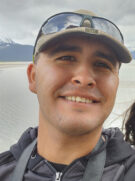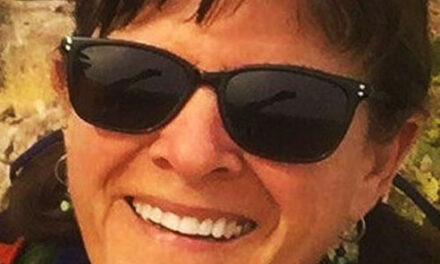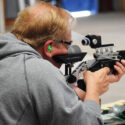soil & water conservation

Johnny Chavez
Hello! My name is Johnny Chavez, and I am the conservation manager for the Valencia Soil and Water Conservation District.
When I first came to work at Whitfield in 2015 (I was hired as a field worker through the Youth Development Inc.), I saw all the hard work the staff and volunteers had done to enhance the conservation area. I remember walking around and thinking about how beautiful it was, and how I had never seen or heard of this place before.
I also remember wondering to myself what was here before the Whitfield Wildlife Conservation Area had come into being.
While the earliest history of the Whitfield lands is murky, our research shows mention of the La Constancia ditch being in place in the mid-1800s, long serving a local flour mill located a bit to the north. We’ve learned that until the ditch systems went in during the mid-1930s, good portions of the La Constancia neighborhood were fallow and frequently flooded.
The flood of 1927 not only knocked out the Belen bridge, but also inundated much of the lands of present day Whitfield. Stable land uses came with the drainage ditches and, by the late 1950s, we hear stories of the Nance’s and their fruit orchards on Whitfield.
Come 1967, records show that John and Ruby Curran bought the land and used it for ranching and to support a milk dairy. The Currans kept as many as 250 head of cattle and dairy cows on the property, maintaining a water infrastructure system to irrigate the pasture lands while running the business from a red brick house up on the property’s east side, where they located a large milking station (both buildings since removed).
In the early 1980s the dairy had mounting difficulties with hay production as the soils became more alkaline after decades of farming, which is suspected to have lowered the available nutrients in the soils, causing a decline in feed production for the milk cows.
In 1986, the Curran Dairy was sold to a company with the Whitfield family name. We have heard varying accounts about what they wished to do with the land, as we’ve been told they wanted to grow crops, while another person said the Whitfield’s wanted to build houses on the land.
Either way, the soil was thought too alkaline and salty for crops, and the water table was too high to build houses, as building in this flood plain would be an expensive endeavor and require special insurance and permits.
In the early 2000s, the Whitfield company met with USDA-Natural Resource Conservation Service biologist Santiago Misquez to discuss conservation easements and other options. He suggested donating the land to the VSWCD, who he knew were interested in the property for conservation purposes.
Soon thereafter, in March 2003 the land referred to as the Whitfield-Trammel tract was donated to the VSWCD, with the Whitfield company believed to have received a tax write-off for the donation. Thus, the Whitfield Wildlife Conservation Area became a possibility.
At this time, the VSWCD did not have income from a mil levy, so the board of supervisors started to look for solutions to fund the transformation of this land into a conservation area. Eventually, resources were secured to develop the conservation area through a combination of support from the New Mexico Legislature and the entrance of the 97-acre Whitfield property into the USDA Wetland Reserve Program.
Work began in earnest in 2004 to develop the pond, wetlands and an underground irrigation piping system. In 2007, construction designs were made for a visitor and education center and for an administrative building, although final funds were only sufficient to build the center, which was finished in 2009.
Whitfield was built by many different partners and individuals, including many dedicated volunteers. Since 2009, there have been more than nine public planting events, with more than 5,000 native trees and shrubs planted. Since Whitfield opened to the public, it has hosted visits from thousands of local students, and represents the county’s only outdoor classroom (that come complete with an environmental educator and a science-based curriculum supported with fundraisers for school buses through our Friends of Whitfield partners).
As the preserve has grown, it is now thought by many to be the premier place in the county to view wildlife and have an outdoors-in-nature experience.
Of course, this is only a partial telling of the Whitfield story. We are excited to learn more area history from our cherished old-time residents and to continue to share what we learn with the wider community.
The Big Hole Fire that happened on April 11, 2022, will forever stand as one of Whitfield’s most historic events. We welcome everyone’s help to make our recovery efforts equally historic, as we restore and improve this gem of Valencia County.
















